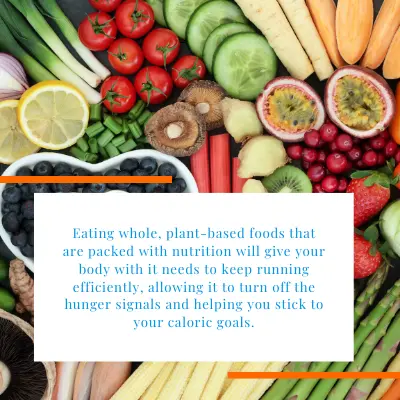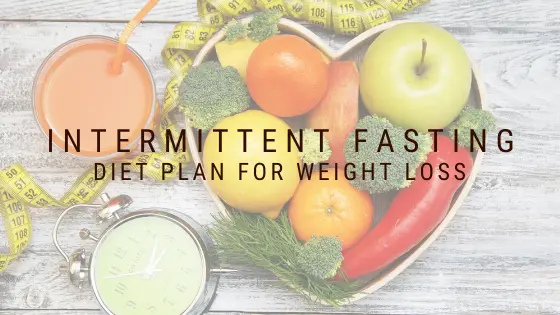In this article, I’ll share an example of a simple Intermittent fasting diet plan if you’re trying to lose weight. Of course, each body is unique, so you’ll have to adapt the diet plan to meet your individual requirements caloric needs, but pairing meal planning with intermittent fasting is a healthy solution that is adaptable for all shapes, sizes, ages, genders, and weight goals.
Weight loss should always be approached on an individual basis and there is no one solution for everyone. Intermittent fasting will help your body find a healthy routine to put the food you eat to the best possible use for your health. A diet plan will make sure you’re consuming enough calories to support your health, and not so many you don’t reach your weight loss goals. If you’ve been struggling with your current weight management plan, this might be a great approach for you.
Intermittent Fasting Timing
Fasting itself doesn’t require you to consider the number or quality of calories you’re consuming, though those are both important considerations for both health and weight loss, rather it solely focuses on the timing of your eating patterns.
There are many different ways to fast, but when weight loss is your goal, a pattern of long-term intermittent fasting will help you get the most steady, sustainable results. Even with this goal, there are many different ways you can time your fast, depending on your unique lifestyle and personality.
We have an entire post dedicated to different types of fasting, but for the purposes of this article, we’ll quickly look at a few that are most popular for weight loss.
The 5:2 Diet and/or Alternate Day Fasting
With the 5:2 diet, the plan is to eat how you normally would for 5 days out of the week, and then restrict your calorie intake to 500 to 600 on 2 separate days. Alternate day fasting encourages you to eat normally one day and fast the next, either completely eliminating calories every other day, or severely restricting your calories to 500 to 600 per fasted day.
12:12 to 16:8 Protocol
Another popular way to fast intermittently is by limiting your daily intake of food to within an 8 – 12-hour window each day. This isn’t a true fast because it doesn’t last a minimum of 24 hours, but it does give you many of the benefits of fasting and it’s easily sustainable on a long-term basis.
If you’re new to fasting, you can begin by restricting your feeding window to 12 hours. As you get comfortable with that, you can increase your fast to 13 hours, and then to 14, etc. Continue until you’re regularly eating all your meals within an 8-hour window, fasting for 16 hours each day.
The Warrior Diet and/or One Meal a Day (OMAD)
The Warrior Diet and/or OMAD takes 16:8 protocol one step further, suggests you eat only one large nutritious meal in the early evening. If you follow the Warrior Diet, you can also eat small amounts of fruits and veggies throughout the day, but you still focus the majority of your caloric consumption on one meal.
If you’re used to over-eating on a significant scale, you may find this a good plan for you. Even though you’ll only be eating once per day, the meal you do eat will be on par with what you’re used to consuming in a single sitting. It’s important to note, however, that this is usually only the case with people who are eating a diet very low in nutrition and high in empty calories. Regularly eating fast food, for example. If you transition to a healthy, nutrient-dense diet, you’ll be naturally much less likely to consume so many calories at once.
For most people, it is extremely difficult to consume an entire day’s worth of calories in a single sitting, so you’ll have to be very careful that if you choose this plan you don’t under-nourish yourself.
Best Food to Break an Intermittent Fast
If you’re fasting with a goal of weight loss, paying attention to the quality of food you consume is just as important as when you consume it. Breaking your fast is particularly important because it sets the standard for your day. If your first meal is healthy and nutritious, you will be more likely to continue to make healthy choices throughout your day.
If you committed to a longer fast, 72 hours or more, it’s even more important to break your fast carefully because digesting food again will be a bit of a shock to your body. The best things you can consume when breaking a longer fast are light and easily digestible. Start with fruit and veggie juices, raw fruits, yogurt, leafy greens, and/or vegetable soups. As your day progresses, you can transition back to your usual healthy diet.
If you’re practicing regular intermittent fasting, your body won’t necessarily have trouble with digestion, but you do want to be sure you’re supporting your health and weight loss goals. Eating whole, plant-based foods that are packed with nutrition will give your body with it needs to keep running efficiently, allowing it to turn off the hunger signals and helping you stick to your caloric goals.
Add to that high-quality proteins and fats to keep you feeling full for longer periods of time, helping curb cravings and reducing the tendency to over-eat.

Intermittent Fasting Meal Plan Example
We’ve talked about the timing and quality of your food, but I’m sure you already know that how much you eat directly correlates to how much you weigh. Monitoring your calories is an important part of a weight-loss journey, but if you’re also managing the quality and the timing, your caloric deficit does not need to be extreme in order to healthfully meet your goals.
A moderately active, 150 pound 5’7” woman in her mid-30s should eat approximately 2,200 calories a day to maintain her weight. To lose weight sustainably, her goal should be to decrease to around 1700-1800 calories.
A moderate active, 200 pound 5’11” man in his mid-30s would need to eat closer to 2,900 calories a day to maintain his weight, decreasing to about 2300 to lose weight sustainably.
Your personal caloric needs will vary based on age, height, current weight and activity levels.
These numbers won’t change because you’re eating less often during your day, nor will they change based on what you eat to reach those calories. But for best results, you want to give your body a minimum of 12 hours a day of fasting and high-quality nutrition in between.
Let’s use an example of an 1800 calorie meal plan, to be eating between the hours of 11 am and 6 pm, which would be following the 16:8 protocol. This means skipping breakfast and having lunch, a snack and dinner. If you are a coffee drinker, it’s ok to have black coffee or tea as long as you’re not adding any cream or sugar, but also make sure you drink plenty of water throughout the day to stay hydrated.
1800 Calorie Intermittent Fasting Diet Plan Example:
Enjoy a hearty bowl of quinoa salad between 11 and noon With about ½ cup of quinoa, a few pine nuts and some lemon juice for dressing, you’ll be looking at about 150 calories. Add some extra veggies for a low cal, high nutrition flavor enhancements. Roasted nuts or avocado would add calories quickly, but also give you a healthy serving of fats to keep you satiated.
A good time for a snack would be between 2 pm and 3 pm. For around 330 calories you could have a couple of handfuls of almonds, a nice plate or bowl full of hummus and veggies, or a glass of healthy fruit and veggie smoothie.
You’ll want to eat dinner shortly before 6 pm to stay within the fasting hours. A good idea for supper could be a nicely baked salmon with a cup of rice, some steamed veggie as well as the option to add melted cheese, and a fresh dinner roll to go with it. With this dinner, you’ll be looking at around 800 calories.
Following a meal plan can be very helpful to remind you of how even small snacking outside of your meal plan can add lots of extra calories to your day.
Plan Your Meals to Lose Weight
With just a little bit of extra planning each day or week you could achieve and maintain your weight loss goals with ease. Just remember, everybody is unique and what works for somebody else might not work for you. This is specifically true if a husband and wife are both trying to lose weight together. Men and women are very different physiologically and biologically, and you should never expect your weight loss journey’s to look the same.
If you’d like to learn more about how fasting can help you in your weight loss journey check out our longer, more inclusive article, Fasting to Lose Weight.




